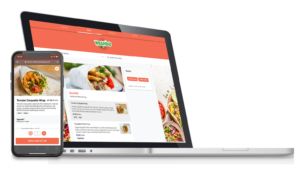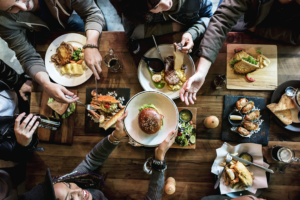This year, QikServe celebrated 10 years since it first launched its ordering and payment technologies for food and hospitality businesses. The market has come a long way since those early days, indeed, adoption of digital ordering has accelerated in the last 18 months.
Now, rather than looking back, we turn our vision forward, looking to the solutions we think will – or could – be in play by the time we reach our 20th year.
Connected facial scanning
A hands-off, all in one customer experience solution for food and hospitality operators. Connecting customer solutions from diary management, loyalty to payment, kitchen display systems and allergen and recipe management – it builds unique customer profiles, granting greater guest insight than has ever been possible before.
Guests expect their favourite restaurants to know everything about them, what their favourite dishes are, where their favourite table is, even who they prefer to be served by. They do not want to repeat themselves on every visit. For them, excellent customer experience, personalisation and convenience are intrinsically connected. Until now, data has been gathered on guests from multiple sources and touchpoints along the customer journey. It has been accessed, analysed and applied piecemeal;
QikScan brings all an operator’s customer management solutions together under one platform – there is just one customer interface, one kitchen screen, one management dashboard and one data portal. The customer feels like a VIP and the venue is empowered by data that lets them treat their customers as such.
Subscriptions
Some brands will have moved away from a traditional order and pay structure, instead inviting loyal customers to choose a subscription membership to the brand. Subscribers will gain access to exclusive offers and menu items – they will also have the opportunity to visit and eat/drink as often as they like without paying an itemised bill (though some premium items may come at extra cost).
Subscriptions will provide a consistent source of income and guarantee cashflow for brands that struggle with swings in footfall based on the season, day of the week or weather.
Unaffiliated delivery fleets
It is a bold statement, but in the future, no-one (or very few people) will own a car. Instead, cars will be available to hire, via an app, off the street in a comparable way to how bikes and electric scooters are now. Car insurance will be tied to people, not to the cars they drive.
This open method of driving will have a knock-on effect to the delivery industry. Delivery drivers will hold a license, but work freelance, unaligned with a specific brand. Businesses can still put drivers on contract, but they can also use a car location app to contact ad-hoc delivery drivers, bringing them in and assigning them for a delivery shift.
Depending on location, brands may also take advantage of drone and robotic delivery. While drone delivery will be an option for companies in regulated regions with large open areas, robots will be more commonplace in confined spaces, such as offices or multi-vendor food halls.
Smart lenses
Google glasses never took off, the creators neglected to define and validate the users and what problems it was solving for them. And, while the technology was not conceptually great, they were cumbersome to wear, difficult to style and simply not convenient to walk around with.
Smart lenses will solve the latter of these issues. Technology is progressing to a stage where complex thin-film electronics can be printed onto other materials – this will allow wearers to access information, display data and view augmented reality projections.
With long-term wearability, the lenses will allow data to be presented on displays built into the ‘screen’. For restaurants this means menus, offers/promotions and venue information will be accessible without any need for menus to be printed or servers to inform guests of any updates. They will simply look at ‘spot’ at their table and the information will be made available for them to review and scroll through.
In 2021 these technologies and operational approaches do not yet exist – though the elements that allow for their creation do. Over the next decade, a desire for convenience and digital-led experiences will allow these concepts to grow and come to fruition. Whether it is in 2031, 2040 or 2028 we feel confident that each of these will enter the public domain, and the hospitality industry, at some point soon.
In the meantime, QikServe has built some great platforms and applications for customers over the past ten years. You don’t need to wait a decade; you can check them all out on our product pages today.





